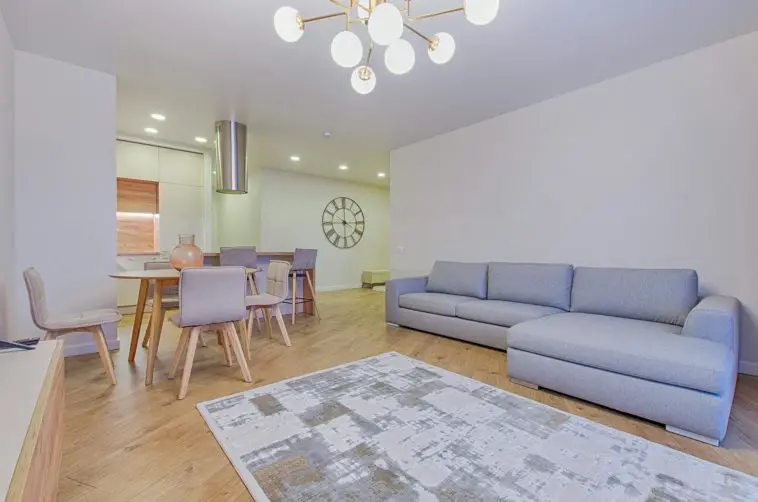Key Points
- Home decoration is essential for creating a comfortable and aesthetically pleasing environment
- Understanding different styles and principles can help in achieving desired results
- Balance, harmony, proportion, and scale are crucial elements in home decor
- Color, texture, and lighting play significant roles in setting the mood of a space
- Sustainable and DIY approaches can add uniqueness and reduce environmental impact
- Room-specific decoration tips can help optimize each area of your home
Home decoration is more than just arranging furniture and hanging artwork; it’s an art form that transforms living spaces into personal sanctuaries. Whether you’re moving into a new home, renovating an existing space, or simply looking to refresh your surroundings, understanding the principles of home decoration can help you create an environment that’s both functional and visually appealing. This article will guide you through the essentials of home decoration, offering insights into various styles, techniques, and tips to help you curate your perfect living space.
Fundamental Principles Of Home Decoration
The foundation of successful home decoration lies in understanding and applying key principles that designers have refined over years of practice. These principles include:
- Balance: This refers to the distribution of visual weight in a room. Symmetrical balance involves mirroring elements on either side of a central point, while asymmetrical balance creates equilibrium through contrasting elements.
- Harmony: A harmonious space is one where all elements work together cohesively. This can be achieved through consistent color schemes, complementary textures, or recurring motifs throughout a room.
- Proportion and Scale: These principles relate to the size relationships between objects in a space. Proper proportion ensures that furniture and decor items fit well within the room’s dimensions, creating a sense of visual comfort.
- Color: The choice of color palette sets the tone for any space. Warm colors like reds and yellows can create a cozy atmosphere, while cool blues and greens promote calmness. Neutral tones provide versatility and can be easily accented with pops of color.
- Texture: Incorporating various textures adds depth and interest to a room. Mixing smooth surfaces with rough ones, or soft fabrics with hard materials, creates a rich sensory experience.
- Lighting: Proper lighting is crucial for both functionality and ambiance. A well-designed lighting plan includes ambient lighting for overall illumination, task lighting for specific activities, and accent lighting to highlight focal points.
Popular Decoration Styles
Understanding different decoration styles can help you identify your preferences and create a cohesive look. Some popular styles include:
- Modern: Characterized by clean lines, minimal ornamentation, and a focus on function. Modern decor often features neutral colors with bold accents.
- Contemporary: This ever-evolving style reflects current trends. It often blends modern elements with traditional touches, resulting in a fresh, of-the-moment look.
- Traditional: Drawing inspiration from classic European decor, traditional style features rich colors, ornate details, and elegant furnishings.
- Rustic: This style brings the outdoors in, emphasizing natural materials like wood and stone. It creates a warm, cozy atmosphere reminiscent of a cabin retreat.
- Scandinavian: Known for its minimalist approach, Scandinavian design focuses on functionality, light colors, and creating bright, airy spaces.
Room-by-Room Decoration Guide
Each room in your home serves a unique purpose and requires specific considerations:
- Living Room: As the central gathering space, the living room should balance comfort with style. Start with a focal point, such as a fireplace or large window, and arrange seating to encourage conversation. Layer textures through throw pillows and blankets, and incorporate personal touches with artwork and family photos.
- Kitchen: Combine functionality with aesthetics in the kitchen. Open shelving can display attractive cookware while providing easy access. Consider a kitchen island for additional workspace and casual dining. Ensure proper task lighting over work areas and ambient lighting for overall illumination.
- Bedroom: Create a restful sanctuary by choosing calming colors and investing in quality bedding. Minimize clutter with smart storage solutions and create a cozy reading nook if space allows. Blackout curtains can improve sleep quality while adding a decorative element.
- Bathroom: Maximize space in bathrooms with clever storage solutions. Use light colors to create an illusion of spaciousness, and consider adding plants for a spa-like atmosphere. Ensure adequate lighting around the mirror for grooming tasks.
- Home Office: Design a productive workspace by choosing ergonomic furniture and ensuring proper lighting. Personalize the space with inspiring decor, but keep it organized to minimize distractions.
DIY and Sustainable Decoration Ideas
Incorporating DIY projects and sustainable practices into your home decoration can add unique character while reducing environmental impact:
- Upcycling: Give old furniture new life with paint, new hardware, or reupholstering. This not only saves money but also creates one-of-a-kind pieces.
- Eco-Friendly Materials: Choose sustainable materials like bamboo flooring, recycled glass countertops, or organic cotton textiles.
- Energy-Efficient Lighting: Opt for LED bulbs and make use of natural light to reduce energy consumption.
- Repurposing: Get creative with repurposing items. Old ladders can become bookshelves, and vintage suitcases can serve as unique side tables.
Seasonal Decoration Tips
Refreshing your decor with the changing seasons can keep your home feeling current and in tune with nature:
- Spring: Incorporate fresh flowers, light fabrics, and pastel colors to reflect renewal and growth.
- Summer: Emphasize outdoor living spaces, use lightweight fabrics indoors, and introduce vibrant colors reminiscent of summer blooms.
- Fall: Warm up your space with rich hues, cozy textures, and natural elements like pumpkins and autumn leaves.
- Winter: Create a festive atmosphere with holiday decorations, warm lighting, and plush textiles that invite cuddling up on cold nights.
Conclusion
Home decoration is a deeply personal process that allows you to express your individuality and create a space that truly feels like home. By understanding the fundamental principles of design, exploring various styles, and incorporating sustainable and DIY elements, you can craft living spaces that are both beautiful and functional.
Don’t be afraid to experiment, mix styles, and most importantly, create a space that brings you joy and comfort.



